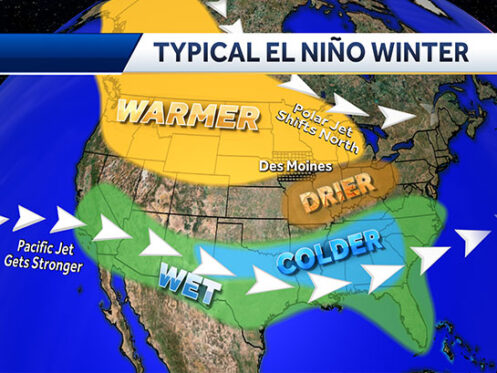El Niño and your house: what you need to know
Did you know that July 3, 2023 was the hottest day on record in world history?
Amazingly, July 4, 2023 then BEAT that average global temperature and became the hottest day on record, pushing July 3 down to second all-time.
El Niño is here for the first time in four years, but this is not going to be the weak one we last saw: this El Niño is shaping up to be one of the strongest in recent memory.
But what does that mean for homeowners in the Tri-State area? Jim Rhubart Roofing is expecting this to be a year of extremes, which is never good for your roofing and siding.
What is El Niño?
El Niño is a climatic phenomenon characterized by warmer than usual sea surface temperatures in the equatorial Pacific Ocean. It occurs every two to seven years and is part of the larger El Niño-Southern Oscillation (ENSO) climate cycle. During this event, warm ocean water moves eastward along the equator towards South America, causing unusually warm and wet weather along the west coast of South America, as well as drier conditions in Southeast Asia and parts of North America.
The effects of El Niño can be felt around the world, affecting global weather patterns and causing changes to oceanic and atmospheric circulation. For instance, during an average El Niño year, temperatures across much of the United States tend to be higher than normal with less precipitation in regions such as the midwest while other areas experience increased rainfall. Other impacts include decreased Atlantic hurricane activity, increased drought risk in some regions, changes to fish populations, increased storm intensity in certain areas, and reduced sea ice levels in both hemispheres.
“The onset of El Niño will greatly increase the likelihood of breaking temperature records and triggering more extreme heat in many parts of the world and in the ocean,” said Petteri Taalas, secretary-general of the World Meteorological Organization, in a press release. The organization said in May that it’s near certain that one of the next five years will be the hottest on record.
How will El Niño affect my home over the next year?
1. Increased temperatures in winter months and more swings
Increased temperatures in winter months can have an adverse effect on roofing and siding. More extreme weather conditions, such as hail, rain, and snow, can wear down roofing shingles quicker than normal. If temperatures dip below 0 degrees Celsius or 32 degrees Fahrenheit for extended periods of time during the winter, ice dams may form, which can cause serious damage to roofs.
Extreme temperature swings in winter can cause roofs to expand and contract, leading to the deterioration of roofing materials over time. This can lead to curling shingles, cracks in the flashing, gaps in joints or seams, and leaks. The extreme temperatures can also weaken nail connections and loosen shingle tabs, which could lead to more extensive damage or even total roof replacement.
Additionally, icicles forming on roofs from melting snow caused by extreme temperature swings present a hazard which can result in injury if left unchecked.
2. Drier conditions in late summer
Drier conditions in late summer can lead to a higher risk of roof damage due to heat and UV radiation. The increased heat can cause shingles to become brittle and cracked, while the increased UV radiation accelerates the oxidation process of asphalt roofing materials leading to fading and wear.
Drier conditions also make it easier for water infiltration into roofs after heavy rain or hail storms, resulting in leaks. Lastly, dry weather may cause moss or lichen growth on roofs which can hold moisture against surfaces and promote rot over time. Therefore, maintaining proper roof maintenance is essential during drier periods as a preventive measure against potential future problems.
Droughts can be a serious risk for roofs, as the prolonged dry conditions can cause wood shingles to become brittle and cracked, while asphalt shingles may experience premature aging due to increased UV radiation. This can lead to gaps in joints or seams, flashing cracks or deteriorated nail connections. Additionally, when debris like leaves or pine needles accumulate on roofs, it can lead to water infiltration in the event of heavy precipitation. Proper roof maintenance is key to keeping your roof in top condition during periods of drought.
3. Decreased snowfall totals during the winter season
Decreased snowfall totals during the winter season can lead to quicker melting when temperatures do rise, which will in turn increase the chances of water infiltration into roofs through worn or damaged shingles. Warmer air and damp conditions are also conducive for moss and lichen growth on roofs, which can hold moisture against surfaces and promote rot over time. With less snow cover, UV radiation from the sun is also more intense, increasing the oxidation process of asphalt roofing materials leading to fading and wear.
Finally, due to a lack of insulating snow cover during cold weather months, roofs may be at an increased risk of ice dams forming under certain circumstances. Ice dams are dangerous because they prevent water from flowing off a roof properly creating an environment where leaks can occur if left unchecked.
4. Potentially increased risk of drought-like conditions
Droughts can be particularly damaging to roofs due to the lack of moisture in the air. This means that roofing materials are more likely to become brittle, cracked, and worn down from extreme heat and UV radiation. Furthermore, since there is less precipitation during droughts, roofs are more susceptible to water infiltration through damaged shingles. Finally, droughts can also make it easier for moss or lichen growth on roofs which hold moisture and promote rot over time. Therefore, regular roof maintenance is essential during drier periods as a preventive measure against potential future problems.
5. Above average precipitation levels during spring and autumn
Above average precipitation levels during spring and autumn can be detrimental to roofs due to extreme moisture. Heavy rains or hail storms can lead to water infiltration into roofs through worn or damaged shingles, which can cause serious damage if left unchecked. The increased moisture also makes it easier for moss or lichen growth on roofs, which holds moisture against surfaces and promotes rot over time.
The prolonged wetness may accelerate the oxidation process of asphalt roofing materials leading to fading and wear as well. Therefore, regular roof maintenance is necessary during periods with above average precipitation in order to mitigate potential future problems.
Heavy rains or hail storms can cause leaks in a roof to worsen because the increased moisture can make existing damages more visible. As water seeps in through worn, cracked, or brittle shingles, it can cause further damage to the underlying structure of the roof and create ideal conditions for mold and mildew growth.
6. Increased storm intensity, especially along coastal areas and near bodies of water
Increased storm intensity can be damaging to roofs due to the extreme weather conditions experienced. High winds will cause roofing materials such as shingles, tiling and flashing to become loose or blown off causing structural damage. Heavy rains or hail storms can lead to water infiltration into roofs through worn or damaged shingles, which can cause serious damage if left unchecked.
Intense storms also increase the risk of debris impacting and damaging a roof, particularly along coastal areas and near bodies of water where flooding is more likely to occur. In addition, strong winds can increase the chances of trees falling onto roofs during storms, resulting in costly repairs.
Lastly, increased storm intensity may also accelerate the oxidation process of asphalt roofing materials leading to fading and wear for those living in affected areas. Therefore regular maintenance is essential for all roofs that are exposed to frequent intense storms in order prevent potential future problems from arising when more severe weather strikes.
7. Increased temperatures in the summer months leading to extreme heat waves
Extreme heat waves can be particularly damaging to roofs due to the high temperatures and UV radiation. The increased heat will cause roofing materials, such as shingles, tiling and flashing, to become brittle and cracked leading to potential structural damage.
In addition, the UV radiation accelerates the oxidation process of asphalt roofing materials leading to fading and wear.
Furthermore, extreme temperatures can cause moisture in a house’s interior to escape through the roof causing dry rot or wood decay in some cases. Dry rot occurs due to lack of ventilation on roofs which further increases damages over time if not remedied properly. Therefore it is important for homeowners living in areas prone to extreme heat waves during summer months to regularly maintain their roofs as a preventive measure against potential future problems.
Jim Rhubart Roofing can help fix the effects of El Niño on your roofing and siding
When it comes to roof repair and replacement, Jim Rhubart Roofing is the leading professional roofing company you can rely on. They understand the importance of maintaining a secure and functional roof, especially during extreme weather events like El Niño, which can have significant effects on your home.
To ensure that you don’t have any issues with your roof, it’s important to get it replaced before it becomes a huge issue. Jim Rhubart Roofing can provide expert services during any season.
What can Jim Rhubart Roofing fix?
Hail damage roof repair, Roof truss repair, Roof inspection, Minor roof repairs, Roof valley repair, Roof leak repair: if your roof leaks, Jim Rhubart Roofing can fix it. Sagging roof, Roof verge repair, Roof pitch repair, Ridge capping repair, Damaged shingles repair, Missing or damaged shingles, Cracked shingles, Shingle repair, Structural repairs, Roof installation, and Roof vents. Skylight repair, Slate roof repair, Common roof repairs, Roof sealant, Existing roof repair, Leaking roof, Major repairs/Minor repair, Roof damage repair, Hail damage repair, and Debris removal.
We provide a wide range of residential roofing services to meet all of our customers’ needs. Whether you are in need of a full roof replacement for your old roof or just some minor repairs, our experienced technicians are here to help.
Whether you need minor roof repairs or a complete roof replacement, Jim Rhubart Roofing has the expertise to handle any roofing project. Their skilled team is experienced in working with a wide variety of roofing materials, including asphalt shingles, metal roofs, flat roofs, and more. They can address common issues such as missing shingles, damaged shingles, and leaks caused by hail damage or other weather-related incidents.
Jim Rhubart Roofing understands that cost is a crucial factor in any roofing project. They provide transparent pricing and accurate estimates for roof repair costs, ensuring that you have a clear understanding of the expenses involved. Whether you need minor repairs or major structural repairs, their knowledgeable team will work with you to find the most cost-effective solution. They can also provide information on roof replacement costs, taking into consideration factors such as the size of your roof and the materials required.
When it comes to roofing services, Jim Rhubart Roofing is at the forefront of the industry. They employ a team of professional roofing contractors who are licensed, insured, and well-trained to handle any roofing project. From roof inspections to roof leak repair, they deliver high-quality workmanship and exceptional customer service. They are also proud members of the National Roofing Contractors Association, demonstrating their commitment to upholding the highest industry standards.






